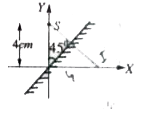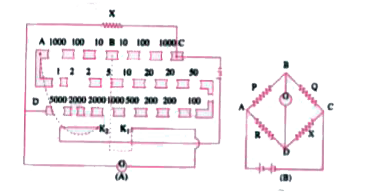If three identical prisms are combined is it possible to pass a beam that emerges undeviated? Undispersed?
Step by step video solution for If three identical prisms are combined is it possible to pass a beam that emerges undeviated? Undispersed? by Physics experts to help you in doubts & scoring excellent marks in Class 12 exams.
Updated on:21/07/2023Topper's Solved these Questions
- RAY OPTICSBook:AAKASH SERIESChapter:RAY OPTICSExercise:PROBLEMS ( LEVEL-I)
Explore 55 Videos
- RAY OPTICSBook:AAKASH SERIESChapter:RAY OPTICSExercise:PROBLEMS ( LEVEL-II)
Explore 57 Videos
- RAY OPTICSBook:AAKASH SERIESChapter:RAY OPTICSExercise:EXERCISE (SHORT ANSWER QUESTIONS )
Explore 24 Videos
- PRACTICAL PHYSICSBook:AAKASH SERIESChapter:PRACTICAL PHYSICSExercise:LECTURE SHEET LEVEL-II (ADVANCED) Linked Comprehension Type Questions
Explore 4 Videos
- SEMICONDUCTOR DEVICESBook:AAKASH SERIESChapter:SEMICONDUCTOR DEVICESExercise:EXERCISE - III
Explore 3 Videos
Similar Questions
The magnetic field in a plane electromagnetic wave is given by By=2×107Tsin(0.5×103x+1.5×1011t)T
(a) What is the wavelength and frequency of the wave?
(b) Write an expression for the eletric field.
View SolutionWhat are the co-ordinates of the imasge of S formed by a plane mirror as shown in figure?

View SolutionHugen's wave theory of light could not explain
View Solution
In an experiment with a post office box, the ratio arms 1000 : 10. The value of third resistance is 999Ω. The values of unknown resistance is
View SolutionThe intrinsic carrier density in germanium crystal at 300 K is 2.5×1013 per cm3. if the electron density in an N-type germanium crystal at 300 K be 0.5×1017 per cm3 the hole density (per cm3) in this N-type crystal at 300 K would be expected around-
View SolutionA prism can produce a minmum deviation δ in a the beam. If three such prisms are combined, the minimum deviation that can be produced in this beam is
View SolutionA prism can produce a minimum deviation δ in a light beam. If three such prisms are combined, the minimum deviation that can be produced in this beam is
View SolutionA glass prism of refractive index 1.5 and angle of prism 6^(@) is put in contact with another prism of refractive index 1.6 when a ray of light is made incident on this combination normally then it emerges out undeviated. The angle of second prism will be
View SolutionWhen white light passes through a glass prism one gets spectrum on the other side of the prism in the emergent beam the ray which is deviating least is or Deviation by a prism is lowest for
View Solutionक्या तीन एक जैसे प्रिज्मों को जोड़कर ऐसा संयोजन बनाया जा सकता है जिससे मध्य किरण का कुल विचलन शून्य हो ? या जिससे कुल वर्ग-विक्षेपण शून्य हो ?
View SolutionHow will you use two identical glass prisms so that a narrow beam of white light incident on one prism emerges out of the second prism as white light? draw and label the ray diagram
View SolutionThe point on the principal axis of a lens such that a ray of light passing through it, emerges undeviated
View SolutionA prism produces a minimum deviation § in a light beam. If three such prisms are combined, the minimum deviation produced will be
View SolutionHow will use two identical glass prisms so that a narrow beam of white light incident on one prism emerges out of the second prism as white light ? Draw and label the ray diagram.
View SolutionHow will you use two identical glass prisms so that a narrow beam of white light incident on one prism emerges out of the second prism as white light? draw and label the ray diagram
View SolutionIf three identical prisms are combined is it possible to pass a beam that emerges undeviated? Undispersed?
View Solution
